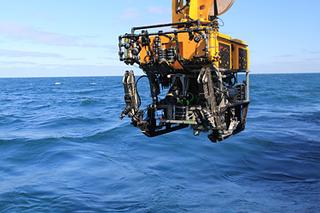Streambox Transmits Live HD Video from the Bottom of the Pacific

SEATTLE: Streambox says that the University of Washington-led Visions’11 expedition selected its 9300 encoders, decoders, and video transport solutions as research tools to transmit live observations of changes in the seafloor environment following the April 2011 eruption of Axial Seamount, an underwater volcano off the coast of Oregon.
The expedition supported the regional cabled network component of the National Science Foundation’s Ocean Observatories Initiative. This cabled component of the OOI, which is now under construction, is a 25-year-long project for exploration and scientific discovery in the Northeast Pacific Ocean and is led by the University of Washington.
The networked system of ocean observing sensors will be interconnected by 540 miles of electro-optical cable. The live video transmission during Visions '11 was an early example of the real-time 24/7 capabilities that will be possible when the OOI cabled system begins operations in 2014. Axial Seamount is one of several OOI study sites in the Western Hemisphere.
The University of Washington's 274’ Thomas G. Thompson research vessel spent several days working 265 miles off the coast of northern Oregon to examine Axial. This underwater volcano is located where the Juan de Fuca tectonic plate is diverging from the Pacific plate. The Visions’ 11 team deployed the Canadian Scientific Submersible Facility’s underwater robotic vehicle ROPOS (Remotely Operated Platform for Ocean Science) connected via fiber-optic cable to an HD video switcher that fed into a Streambox 9300 encoder on the ship. The encoder utilized a satellite connection to stream a 24/7 live video feed for majority of the three-week expedition back to the University of Washington campus in Seattle, as well as to the Internet for the public to view worldwide. The cruise took place Aug. 11-Sept. 1.
Get the TV Tech Newsletter
The professional video industry's #1 source for news, trends and product and tech information. Sign up below.
